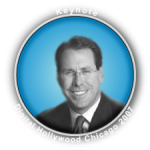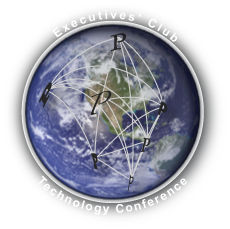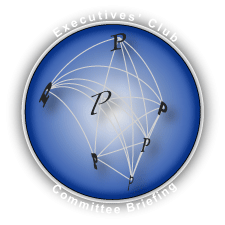Mobile Video: A Perfect Storm for User-Generated Content?
 At Digital Hollywood Chicago, mobile was constantly heralded as the emerging “third screen” because it would enable content consumption regardless of time or place, and most speakers posited that video would grow significantly as a portion of all content. However, there is little video content available for mobile viewing, so why should consumers get excited about it? Will mobile shine as the most personal view into the consumer, or will it turn out to be the third wheel? At Digital Hollywood Chicago, mobile was constantly heralded as the emerging “third screen” because it would enable content consumption regardless of time or place, and most speakers posited that video would grow significantly as a portion of all content. However, there is little video content available for mobile viewing, so why should consumers get excited about it? Will mobile shine as the most personal view into the consumer, or will it turn out to be the third wheel?
All mobile value chain players are frenetically trying to build a new digital world around the mobile device, and this world will be comprised of the familiar triad: devices, networks and content, much of which will be video. Currently, video is the highest value content medium. This session examined the current stage of development to technology and business models.
Internet pioneers who remember the thrill of squealing modems connecting in the early days have a useful metaphor with which to regard video on mobile. We are very much in the early days: networks in most geos are inconsistent, and their ability to […]
Now Everyone Is a Producer—How Will User-Generated Content Affect Traditional Media?
 User-generated media (UGM) represents a poignant dichotomy within the context of Digital Hollywood Chicago: panelists and speakers represented a full spectrum of players that provide the capability for people to communicate, work and entertain themselves, but they have in common that they represent business interests. These players are in the business of commercializing communication. Consumers (aka “users,” “people”) represent personal interests: they communicate because they want to; they have little commercial interest in most of their communication. User-generated media (UGM) represents a poignant dichotomy within the context of Digital Hollywood Chicago: panelists and speakers represented a full spectrum of players that provide the capability for people to communicate, work and entertain themselves, but they have in common that they represent business interests. These players are in the business of commercializing communication. Consumers (aka “users,” “people”) represent personal interests: they communicate because they want to; they have little commercial interest in most of their communication.
Panelists grappled with this reality but did not address it directly. They explored business models for UGM—and mostly came up empty. The problem that UGM poses to providers is two-fold: UGM costs providers money in terms of bandwidth and other resources. It also carries a considerable opportunity cost, which is hard to measure but palpable: it crowds out commercial content by occupying customers in two ways: creating UGM and experiencing others’ UGM.
UGM is also difficult to compete against because its producers play by much different rules: they usually produce for free, while commercial producers have high costs. UGM producers […]
Redefining the Industry to Remain Relevant—The Significance of AT&T’s Big Bet on Mobile
 At Digital Hollywood Chicago, AT&T was busy redefining itself as a 21st century communications provider, and we believe that will increasingly mean focusing on content to provide profits. An AT&T veteran but new in 2007 as CEO, Randall Stephenson keynoted the conference by sharing his vision for AT&T and the future of the industry. At Digital Hollywood Chicago, AT&T was busy redefining itself as a 21st century communications provider, and we believe that will increasingly mean focusing on content to provide profits. An AT&T veteran but new in 2007 as CEO, Randall Stephenson keynoted the conference by sharing his vision for AT&T and the future of the industry.
Telecoms provide the network infrastructure of distributed computing and global communications, but infrastructure is a tough business with thin margins and high capital requirements. All telecoms are trying to move up the value chain to escape commoditization pressure and relentless price competition. For example, Sprint is betting heavily on WiMAX to redefine itself as the enabler of digital relationships.
In the context of telecoms redefinition, AT&T’s alliance with Apple could be very strategic for each company, as AT&T can use Apple’s design excellence to increase subscribers and push advanced network services while Apple needs a telecom partner to drive its relevance in the growing third screen market with the iPhone. According to Stephenson, the […]
Visions for Technology Leadership
 After Gary Forsee’s luncheon address, a diverse panel of executives took the stage to discuss global technology leadership. Hardik Bhatt, CIO of the City of Chicago, Steve Goldman, Director of Architecture, the Chicago Mercantile Exchange, Raymond Spencer, CEO of Kanbay International, and David Weick, Global CIO of McDonald’s, shared their visions for Chicago’s global role in the world. Janet Kennedy, Midwest General Manager of Microsoft, gracefully moderated the panel discussion. The Executives’ Club of Chicago’s quarterly Technology Conference took place March 8 at the Chicago Hilton. After Gary Forsee’s luncheon address, a diverse panel of executives took the stage to discuss global technology leadership. Hardik Bhatt, CIO of the City of Chicago, Steve Goldman, Director of Architecture, the Chicago Mercantile Exchange, Raymond Spencer, CEO of Kanbay International, and David Weick, Global CIO of McDonald’s, shared their visions for Chicago’s global role in the world. Janet Kennedy, Midwest General Manager of Microsoft, gracefully moderated the panel discussion. The Executives’ Club of Chicago’s quarterly Technology Conference took place March 8 at the Chicago Hilton.
“Getting global” can mean many things, and panelists hit the issue from many directions. I’ll venture that, more than anything, it means changing one’s mindset, focus and approach, all of which are difficult to measure. All panelists represented organizations that had had international operations for decades, so how is global different?
[…]
Media Reflects Power Shift away from Producers to Consumers—Glimpses of Consumer Empowerment
 The Executives’ Club of Chicago assembled a visionary panel to give Midwest business leaders their advice for media communications in the (“new” ,^) digital age. Rishad Tobaccowala, CEO, Denuo Group and Chief Innovation Officer, Publicis; Dr. Jim Taylor, Vice Chairman, The Harrison Group and Emily L. Barr, President & General Manager, ABC 7 Chicago were panelists, and Susan D. Whiting, Chairman, Nielsen Media Research moderated the breakfast, which took place 30 January 2007 at Chicago’s Mid-America Club. The Executives’ Club of Chicago assembled a visionary panel to give Midwest business leaders their advice for media communications in the (“new” ,^) digital age. Rishad Tobaccowala, CEO, Denuo Group and Chief Innovation Officer, Publicis; Dr. Jim Taylor, Vice Chairman, The Harrison Group and Emily L. Barr, President & General Manager, ABC 7 Chicago were panelists, and Susan D. Whiting, Chairman, Nielsen Media Research moderated the breakfast, which took place 30 January 2007 at Chicago’s Mid-America Club.
Ours is rapidly becoming a P2P world in which individuals communicate with individuals digitally, and this represents a profound shift for media companies, their clients and everyone’s customers. The focus of the morning discussion was “media”—television, print, radio—which are still largely organized to deliver one message to an audience of many. Of course, the “mass” has always been comprised of individuals, but their alternatives to mass media have been few until fairly recently. Now they are tuning out mass messaging in favor of more relevant communications, which increasingly come from—other individuals. Meantime, people are increasingly connected via the Internet (whether through mobile […]
Part of the IDC Outsourcing Forum Midwest Report
 The Williams Companies is a Fortune 200 energy company that currently distributes 12% of all the natural gas consumed in the United States and is a major employer in Tulsa, Oklahoma. Marcia MacLeod, Vice President of Business Process Outsourcing, and Karen Caldwell, Director for Energy & Utilities at IBM, explained how the company pulled a Houdini in the early 2000s, using outsourcing to survive a near-death experience in which its stock dropped from $48 to less than one dollar. This case reflected outsourcing’s potential in dramatic turnaround situations while confronting some outmoded stereotypes about its impact on local employment. The Williams Companies is a Fortune 200 energy company that currently distributes 12% of all the natural gas consumed in the United States and is a major employer in Tulsa, Oklahoma. Marcia MacLeod, Vice President of Business Process Outsourcing, and Karen Caldwell, Director for Energy & Utilities at IBM, explained how the company pulled a Houdini in the early 2000s, using outsourcing to survive a near-death experience in which its stock dropped from $48 to less than one dollar. This case reflected outsourcing’s potential in dramatic turnaround situations while confronting some outmoded stereotypes about its impact on local employment.
[…]
Part of the IDC Outsourcing Forum Midwest Report
 IDC analysts Brian Bingham and Barry Rubenstein cited extensive IDC research to describe how outsourcing is developing as a business practice. Although they didn’t explicitly delve into adoption itself, their treatment of ITO (IT outsourcing) and BPO (business process outsourcing) provided significant insight into how outsourcing is being adopted by global enterprises. ITO is several years ahead of BPO for several reasons, namely that IT has traditionally been managed as a support function and cost center in most enterprises and, as such, it has been a textbook candidate for outsourcing. BPO is often more intertwined with the business’s core competencies; in addition, it almost always requires sophisticated IT support. Clearly, ITO had well publicized failures in the early 2000s, but this proved to be part of the normal learning curve, and ITO successes have emboldened buyers and providers to push further into the business. This contrast between ITO and BPO patterns is particularly instructive. IDC analysts Brian Bingham and Barry Rubenstein cited extensive IDC research to describe how outsourcing is developing as a business practice. Although they didn’t explicitly delve into adoption itself, their treatment of ITO (IT outsourcing) and BPO (business process outsourcing) provided significant insight into how outsourcing is being adopted by global enterprises. ITO is several years ahead of BPO for several reasons, namely that IT has traditionally been managed as a support function and cost center in most enterprises and, as such, it has been a textbook candidate for outsourcing. BPO is often more intertwined with the business’s core competencies; in addition, it almost always requires sophisticated IT support. Clearly, ITO had well publicized failures in the early 2000s, but this proved to be part of the normal learning curve, and ITO successes have emboldened buyers and providers to push further into the business. This contrast between ITO and BPO patterns is particularly instructive.
[…]
Clear Outsourcing Adoption Curve Emerges
 The IDC Outsourcing Forum Midwest convened sourcing thought leaders from global enterprises, world-class outsourcing providers and IDC’s leading analysts in Chicago September 11-12, 2006. They shared pioneering experiences that are pushing the transformational boundaries of outsourcing, one of the most important management practices to emerge in the 21st century. Case studies from the Williams Companies, AOL, Lucent, Barry-Wehmiller and Procter & Gamble explained how to use outsourcing to satisfy multifaceted business objectives, and a clear adoption curve is emerging that describes how outsourcing is reshaping the world’s largest organizations. The IDC Outsourcing Forum Midwest convened sourcing thought leaders from global enterprises, world-class outsourcing providers and IDC’s leading analysts in Chicago September 11-12, 2006. They shared pioneering experiences that are pushing the transformational boundaries of outsourcing, one of the most important management practices to emerge in the 21st century. Case studies from the Williams Companies, AOL, Lucent, Barry-Wehmiller and Procter & Gamble explained how to use outsourcing to satisfy multifaceted business objectives, and a clear adoption curve is emerging that describes how outsourcing is reshaping the world’s largest organizations.
[…]
Surprising Manufacturing Case Study Featured at IDC Outsourcing Forum shows how outsourcing is creating more onshore manufacturing jobs.
 Readers of U.S. and European press are too familiar with the plight of manufacturers—and how outsourcing is increasing cost pressures and sending even more jobs overseas. What is less known is that leading edge manufacturers are beginning to use outsourcing to increase local employment by making local companies more competitive. Readers of U.S. and European press are too familiar with the plight of manufacturers—and how outsourcing is increasing cost pressures and sending even more jobs overseas. What is less known is that leading edge manufacturers are beginning to use outsourcing to increase local employment by making local companies more competitive.
Forum attendees will hear how Midwest U.S. manufacturer Barry-Wehmiller, which was featured in BusinessWeek’s The Future of Outsourcing, is creating a new business that turns around manufacturers by improving their business processes, which makes them more competitive and ends up increasing local employment in many cases. Forum presenter Vasant Bennett is President of Barry-Wehmiller International Resources (BMIS) and a chief architect of BWIS’s emerging service offerings. He spoke to the Global Human Capital Journal last week.
[…]
Part of the IDC Outsourcing Forum Midwest Report
 Midwest executives will have an excellent opportunity to learn how to take their outsourcing strategy to the next level next week, when IDC will bring their Outsourcing Forum to Chicago. Themed “Reinventing your business through BPO and ITO,” the Forum will feature speakers from Proctor & Gamble, Lucent, The Williams Companies, NiSource, Goodyear, Barry-Wehmiller and Hydro One Networks. In addition, world-class outsourcing providers such as Capgemini, IBM, Hewlett-Packard will offer practical advice, and several of IDC’s lead analysts will offer their insights. Midwest executives will have an excellent opportunity to learn how to take their outsourcing strategy to the next level next week, when IDC will bring their Outsourcing Forum to Chicago. Themed “Reinventing your business through BPO and ITO,” the Forum will feature speakers from Proctor & Gamble, Lucent, The Williams Companies, NiSource, Goodyear, Barry-Wehmiller and Hydro One Networks. In addition, world-class outsourcing providers such as Capgemini, IBM, Hewlett-Packard will offer practical advice, and several of IDC’s lead analysts will offer their insights.
I was able to catch up with event chairman Bob Welch, who previewed some of the Summit’s key themes. I also have information on a special registration deal.
[…]
|
|
 At Digital Hollywood Chicago, mobile was constantly heralded as the emerging “third screen” because it would enable content consumption regardless of time or place, and most speakers posited that video would grow significantly as a portion of all content. However, there is little video content available for mobile viewing, so why should consumers get excited about it? Will mobile shine as the most personal view into the consumer, or will it turn out to be the third wheel?
At Digital Hollywood Chicago, mobile was constantly heralded as the emerging “third screen” because it would enable content consumption regardless of time or place, and most speakers posited that video would grow significantly as a portion of all content. However, there is little video content available for mobile viewing, so why should consumers get excited about it? Will mobile shine as the most personal view into the consumer, or will it turn out to be the third wheel?
 At Digital Hollywood Chicago, AT&T was busy redefining itself as a 21st century communications provider, and we believe that will increasingly mean focusing on content to provide profits. An AT&T veteran but new in 2007 as CEO, Randall Stephenson keynoted the conference by sharing his vision for AT&T and the future of the industry.
At Digital Hollywood Chicago, AT&T was busy redefining itself as a 21st century communications provider, and we believe that will increasingly mean focusing on content to provide profits. An AT&T veteran but new in 2007 as CEO, Randall Stephenson keynoted the conference by sharing his vision for AT&T and the future of the industry. After Gary Forsee’s luncheon address, a diverse panel of executives took the stage to discuss global technology leadership. Hardik Bhatt, CIO of the City of Chicago, Steve Goldman, Director of Architecture, the Chicago Mercantile Exchange, Raymond Spencer, CEO of Kanbay International, and David Weick, Global CIO of McDonald’s, shared their visions for Chicago’s global role in the world. Janet Kennedy, Midwest General Manager of Microsoft, gracefully moderated the panel discussion. The Executives’ Club of Chicago’s quarterly Technology Conference took place March 8 at the Chicago Hilton.
After Gary Forsee’s luncheon address, a diverse panel of executives took the stage to discuss global technology leadership. Hardik Bhatt, CIO of the City of Chicago, Steve Goldman, Director of Architecture, the Chicago Mercantile Exchange, Raymond Spencer, CEO of Kanbay International, and David Weick, Global CIO of McDonald’s, shared their visions for Chicago’s global role in the world. Janet Kennedy, Midwest General Manager of Microsoft, gracefully moderated the panel discussion. The Executives’ Club of Chicago’s quarterly Technology Conference took place March 8 at the Chicago Hilton. The Executives’ Club of Chicago assembled a visionary panel to give Midwest business leaders their advice for media communications in the (“new” ,^) digital age. Rishad Tobaccowala, CEO, Denuo Group and Chief Innovation Officer, Publicis; Dr. Jim Taylor, Vice Chairman, The Harrison Group and Emily L. Barr, President & General Manager, ABC 7 Chicago were panelists, and Susan D. Whiting, Chairman, Nielsen Media Research moderated the breakfast, which took place 30 January 2007 at Chicago’s Mid-America Club.
The Executives’ Club of Chicago assembled a visionary panel to give Midwest business leaders their advice for media communications in the (“new” ,^) digital age. Rishad Tobaccowala, CEO, Denuo Group and Chief Innovation Officer, Publicis; Dr. Jim Taylor, Vice Chairman, The Harrison Group and Emily L. Barr, President & General Manager, ABC 7 Chicago were panelists, and Susan D. Whiting, Chairman, Nielsen Media Research moderated the breakfast, which took place 30 January 2007 at Chicago’s Mid-America Club. The Williams Companies is a Fortune 200 energy company that currently distributes 12% of all the natural gas consumed in the United States and is a major employer in Tulsa, Oklahoma. Marcia MacLeod, Vice President of Business Process Outsourcing, and Karen Caldwell, Director for Energy & Utilities at IBM, explained how the company pulled a Houdini in the early 2000s, using outsourcing to survive a near-death experience in which its stock dropped from $48 to less than one dollar. This case reflected outsourcing’s potential in dramatic turnaround situations while confronting some outmoded stereotypes about its impact on local employment.
The Williams Companies is a Fortune 200 energy company that currently distributes 12% of all the natural gas consumed in the United States and is a major employer in Tulsa, Oklahoma. Marcia MacLeod, Vice President of Business Process Outsourcing, and Karen Caldwell, Director for Energy & Utilities at IBM, explained how the company pulled a Houdini in the early 2000s, using outsourcing to survive a near-death experience in which its stock dropped from $48 to less than one dollar. This case reflected outsourcing’s potential in dramatic turnaround situations while confronting some outmoded stereotypes about its impact on local employment. Readers of U.S. and European press are too familiar with the plight of manufacturers—and how outsourcing is increasing cost pressures and sending even more jobs overseas. What is less known is that leading edge manufacturers are beginning to use outsourcing to increase local employment by making local companies more competitive.
Readers of U.S. and European press are too familiar with the plight of manufacturers—and how outsourcing is increasing cost pressures and sending even more jobs overseas. What is less known is that leading edge manufacturers are beginning to use outsourcing to increase local employment by making local companies more competitive.